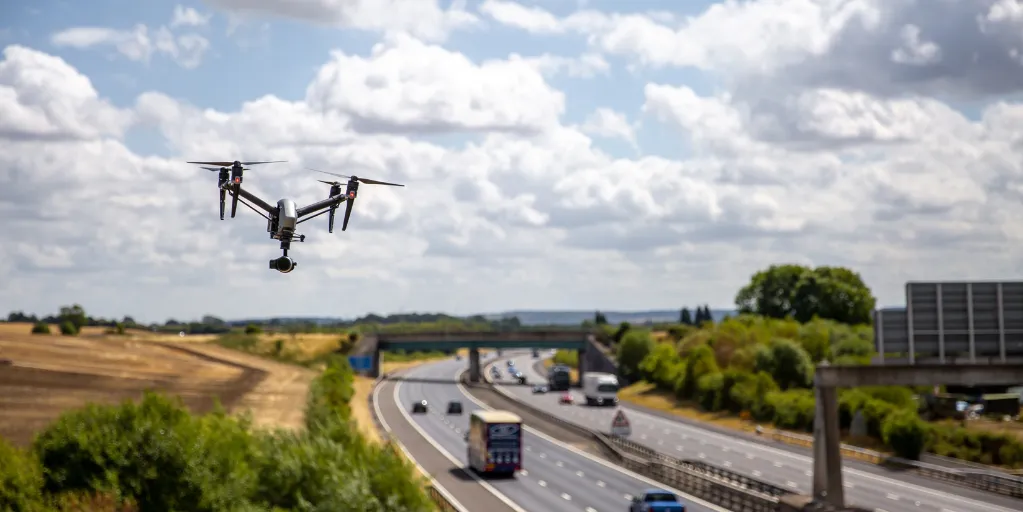Sheltered Operations in Canada: New Drone Rules Explained
Transport Canada has recently introduced new changes to Canada’s drone regulations that will be effective as of November 4, 2025, including the introduction of sheltered operations.
Flying drones near buildings or structures presents unique challenges, especially when maintaining a direct visual line-of-sight isn’t possible. That’s where sheltered operations come in. This specialized type of drone flight allows pilots to operate safely around structures while following regulations.
Whether you’re conducting inspections, industrial surveys, or emergency response, understanding sheltered operations is essential for compliance and safety. Here’s everything you need to know.

What Are Sheltered Operations?
Sheltered operations refer to drone flights conducted near a structure, such as a building, without maintaining visual line-of-sight (VLOS) and without a visual observer. This allows pilots to maneuver drones around obstructions while staying within controlled parameters to ensure safety and compliance.
Why Are Sheltered Operations Useful?
Sheltered operations offer key advantages in various applications, such as:
- Infrastructure Inspections – Inspecting buildings, bridges, or towers where maintaining a direct line-of-sight is difficult.
- Industrial Operations – Conducting aerial surveys of large facilities or construction sites without requiring a visual observer.
- Emergency Response – Supporting search-and-rescue missions or fire assessments in areas where obstacles may limit visibility.
How to Conduct Sheltered Operations
Transport Canada has set specific requirements that drone pilots must follow when performing sheltered operations. As of November 4th, 2025, these are the key requirements:
- Must Be Flying a Small Drone – Pilots performing sheltered operations should be flying a small drone, which are those weighing less than 25 kg.
- Must Have an Advanced Certificate – Pilots must hold an Advanced Operations Pilot Certificate to conduct sheltered operations.
- Remain Close to the Structure – Your drone must remain within 200 feet (61 meters) horizontally from the building or structure during the operation.
- Maintain a Low Altitude – The maximum altitude allowed is 100 feet (30 meters) above the structure during the operation.
- Stay Within Range – The drone must stay within two nautical miles of the pilot and control station at all times.
- Operate from a Set Location – The pilot and control station must be located at the designated take-off, launch, landing, or recovery site during these activities.
- Maintain Distance from People – You must keep your drone at least 100 feet (30 meters) horizontally from any person not involved in the operation.
Key Takeaways for Drone Pilots
Sheltered operations provide a valuable way for drone pilots to safely and efficiently conduct flights near structures. By understanding the key requirements of this operation, pilots can maximize their drones’ capabilities while ensuring compliance with Transport Canada laws.
Note: If you would like to perform sheltered operations before November 4, 2025, you will need to apply for an SFOC (Special Flight Operations Certificate).
To continue following drone regulations and laws, check out RPAS Wilco—Canada’s #1 platform for automated flight compliance tools!





